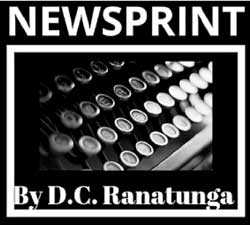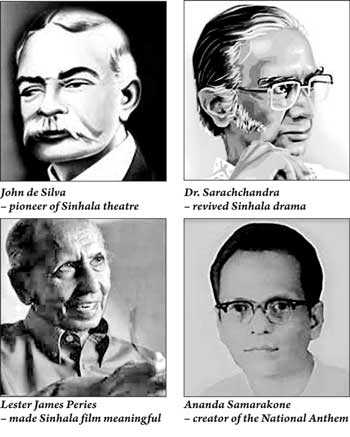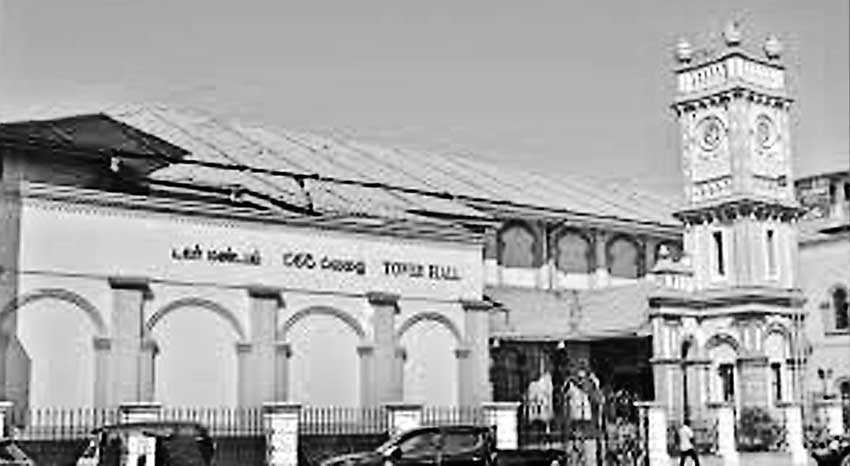Monday Mar 17, 2025
Monday Mar 17, 2025
Saturday, 23 February 2019 00:10 - - {{hitsCtrl.values.hits}}
 At the dawn of the 20th century, Sinhala theatre reached high standards due to the efforts of two leading dramatists, John de Silva (1854-1933) and Charles Dias (1878-1944), who staged plays at the Tower Hall, Maradana, opened in 1911.
At the dawn of the 20th century, Sinhala theatre reached high standards due to the efforts of two leading dramatists, John de Silva (1854-1933) and Charles Dias (1878-1944), who staged plays at the Tower Hall, Maradana, opened in 1911.
The plays drew on history and legend and were a vehicle for patriotic messages. These were musical dramas resulting in the development of music as well. The song ‘Danno Budunge’ is a fine example of how a song of that era is still popular.
Closer to Independence the first Sinhala feature film, ‘Kadawunu Poronduwa’ (Broken Promise), was screened in 1947. Originally a stage drama by the Minerva theatre group in Negombo, it was followed by several others directed by B.A.W. Jayamanne, the founder of the Minerva group.
Until 1952 we listened to ‘God Save the King’ – the British National Anthem. We had to keep standing when it was played before a film was screened. Ananda Samarakone’s ‘Namo Namo Matha’ became the National Anthem in 1952. The song was originally written in 1941, accepted as the National Anthem by the UNP Cabinet in 1951, declared the National Anthem the following year. The opening words were changed to ‘Sri Lanka Matha’ in 1961, supposedly on astrological advice, to the distress of the composer.
Towards the end of 1956 a landmark in the development of Sinhala theatre was recorded with ‘Maname,’ Professor Ediriweera Sarachchandra’s classic based on the ‘nadagam,’ popular folk opera style.
 I recall how I bought a ticket for two rupees and was at the Lionel Wendt early that Saturday evening for the first show. To be exact it was Saturday, 3 November 1956. It was a totally new experience. Colombo audiences were rather sceptical about what they were going to see. “A ‘nadagama’ – something for the ‘godayas’ not for us,” was their attitude.
I recall how I bought a ticket for two rupees and was at the Lionel Wendt early that Saturday evening for the first show. To be exact it was Saturday, 3 November 1956. It was a totally new experience. Colombo audiences were rather sceptical about what they were going to see. “A ‘nadagama’ – something for the ‘godayas’ not for us,” was their attitude.
The hall was about half empty. The Sinhala press did not show much enthusiasm. They were basically anti-university and biased against Sarachchandra. The Dinamina Editor, M.A. de Silva, thought otherwise. He invited his university friend Charles Abeysekera, a CCS (Ceylon Civil Service) high ranking official in the public service to review the play. Regi Siriwardena, Features Editor of the Daily News, reviewed it for his paper. Both reviews changed the initial response and Maname began to attract crowds.
One-and-a-half months later came ‘Rekava’ – Lester James Peries’ maiden effort at directing a Sinhala feature film. Forty-two Sinhala films had been screened by the time Lester’s first film was shown on 28 December 1956. It was a long wait for a ‘genuine’ Sinhala film. We had had enough of the South Indian look in what was dished out as Sinhala films. In Lester’s words, “Sinhala cinema had taken a false start. The early films were neither films nor Sri Lankan.” The picture changed with ‘Rekava’.
I always had an interest in Sinhala music, theatre and film but did not get a break in writing to the ‘Dinamina’ mainly because I was in the news desk. Moreover, Jayavilal Wilegoda, the Features Sub-Editor, did a film page every Wednesday in the ‘Dinamina’. He was very critical of the Sinhala films and tried his best to improve their quality through his reviews. I wouldn’t say he succeeded to the extent he would have liked to but they did have an impact.
Baldwin Kuruppu, a Colombo university graduate who had an interest in theatre, reviewed Sinhala dramas for the ‘Dinamina’.
With ‘Maname,’ stylised drama became the fashion with several dramatists trying their hand. The Sinhala Drama Panel of the Arts Council gave all encouragement for the progress of theatre and the annual drama festival attracted a large number of promising artistes.

Tower Hall – in existence from 1911
Discover Kapruka, the leading online shopping platform in Sri Lanka, where you can conveniently send Gifts and Flowers to your loved ones for any event including Valentine ’s Day. Explore a wide range of popular Shopping Categories on Kapruka, including Toys, Groceries, Electronics, Birthday Cakes, Fruits, Chocolates, Flower Bouquets, Clothing, Watches, Lingerie, Gift Sets and Jewellery. Also if you’re interested in selling with Kapruka, Partner Central by Kapruka is the best solution to start with. Moreover, through Kapruka Global Shop, you can also enjoy the convenience of purchasing products from renowned platforms like Amazon and eBay and have them delivered to Sri Lanka.
Discover Kapruka, the leading online shopping platform in Sri Lanka, where you can conveniently send Gifts and Flowers to your loved ones for any event including Valentine ’s Day. Explore a wide range of popular Shopping Categories on Kapruka, including Toys, Groceries, Electronics, Birthday Cakes, Fruits, Chocolates, Flower Bouquets, Clothing, Watches, Lingerie, Gift Sets and Jewellery. Also if you’re interested in selling with Kapruka, Partner Central by Kapruka is the best solution to start with. Moreover, through Kapruka Global Shop, you can also enjoy the convenience of purchasing products from renowned platforms like Amazon and eBay and have them delivered to Sri Lanka.